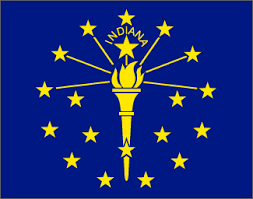“I read that one of the steel plants is closing more lines. We have 70 jobs open right now,” says Horseshoe Hammond General Manager Dan Nita, alluding to the resiliency of  the Indiana casino industry, which is celebrating 20 years. Some of the initial players, like Don Barden (R.I.P.) and Donald Trump are long gone from the scene but the riverboat casinos are still there are and still important donors to the tax base. A study by the Chicago Tribune finds that unemployment is still high in Gary and Hammond, and casino workforces are two-thirds what they were before the Great Recession. However, the Tribune also chronicles a comeback in casino employment and excellent chances for advancement within the riverboats themselves (102 Majestic Star employees have been on the job since Day One, 114 at Horseshoe Hammond).
the Indiana casino industry, which is celebrating 20 years. Some of the initial players, like Don Barden (R.I.P.) and Donald Trump are long gone from the scene but the riverboat casinos are still there are and still important donors to the tax base. A study by the Chicago Tribune finds that unemployment is still high in Gary and Hammond, and casino workforces are two-thirds what they were before the Great Recession. However, the Tribune also chronicles a comeback in casino employment and excellent chances for advancement within the riverboats themselves (102 Majestic Star employees have been on the job since Day One, 114 at Horseshoe Hammond).
Casinos “brought 4,000 to 6,000 jobs to cities that needed jobs desperately. That’s 1.6 percent of all jobs in Northwest Indiana. I’d call that significant,” Indiana University Northwest professor Micah Pollak told the newspaper. John Houchin started as a deckhand on Horseshoe Hammond in 1996 and today is its director of information technology. “There’s plenty of room for advancement here. It’s not just a restaurant and place to play. There are all kinds of areas to grow,” adds Majestic Star shift manager Tom Gutierrez, who started as a dealer. Both Horseshoe and Ameristar East Chicago have made possible infrastructural improvements to their penurious host cities. Majestic Star has gone far and above the required amount of minority contracting (10%), letting 22% of vendor contracts to minority-owned firms. One can go on but you get the point: Casinos haven’t been a cure-all for Indiana, but they’ve made a bad situation much better.
* Racinos could come to Nebraska if a trio of ballot questions make the November election and sponsor Keep the Money in Nebraska says it’s ahead of the expected pace when it comes to gathering petition signatures. It really is a question of keeping the money in Nebraska for the campaign’s lead underwriter, the Winnebago Tribe of Nebraska, which wants to reopen Atokad Downs and claw back revenue lost to the Hard Rock hotel-casino in Sioux City. The petition drive is moving so fast that a poorly funded opposition group, Gambling with the Good Life, is falling back and strategizing for an election fight, for which it plans to cobble together a coalition of Catholic, Methodist and Jewish clergy.
To this, Ho-Chunk Inc. CEO Lance Morgan replies that Nebraska has four tribal casinos at present and “the sky has not fallen. The sun still rises. Nobody has died.” Casino backers are predicting $100 million a year in tax revenue (at a 20%), based in part on the fact that Nebraskans gamble an average of $109 million a year at Iowa casinos. Keep the Money is throwing a somewhat complicated proposition at voters: “One proposal would amend the state constitution to allow games of chance at licensed racetracks. The other two would change state law to specify where casinos can be located, how they’re regulated and how the tax revenue is distributed.” At the moment, however, we have to like this initiative’s chances in November.
* As we’ve reported before, Marina Bay Sands is winning the battle of the megaresorts in Singapore. The latest casualties at Resorts World Sentosa are a rumored 400 pink-slipped workers. Genting Group admitted to conducting a “headcount” of its needed workforce “so that it can achieve the right size to meet its business needs.” In other words, downsizing. Dealers and pit bosses were reportedly on the front lines of those getting the chop, including 150 croupiers. A 29% reduced influx of Chinese VIP players was blamed for the retrenchment at Resorts World, which is coming off an 83% decline in first-quarter profit.
* “I’ll never do slots. It’s not fun for me to sit in front of a screen and press buttons.” So says a millennial gambler at Mystic Lake Casino, near Minneapolis. The state’s tribal casinos, a $1.5 billion industry, are among those struggling with staying relevant for a greening customer base. Out: smoking. In: baccarat and Kesha. It’s more expensive to cater to the young crowd but casinos in the Land of 10,000 Lakes are putting in the extra amenities (like spas) that they expect. It’s a generation-gap drama that is playing out in every significant U.S. casino market.“It remains to be seen whether millennials will gamble to the same extent as the older generation,” Fitch Ratings analyst Alex Bumazhny tells the Star Tribune, but there may be a costly adjustment ahead for Minnesota casinos for whom slots comprise as much as 90% of revenue.

